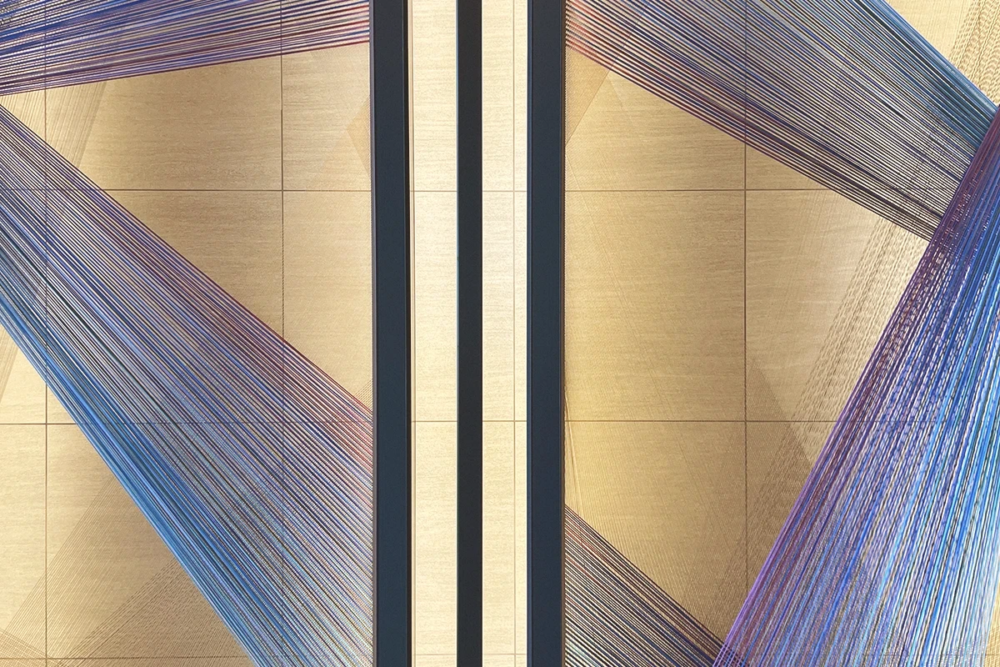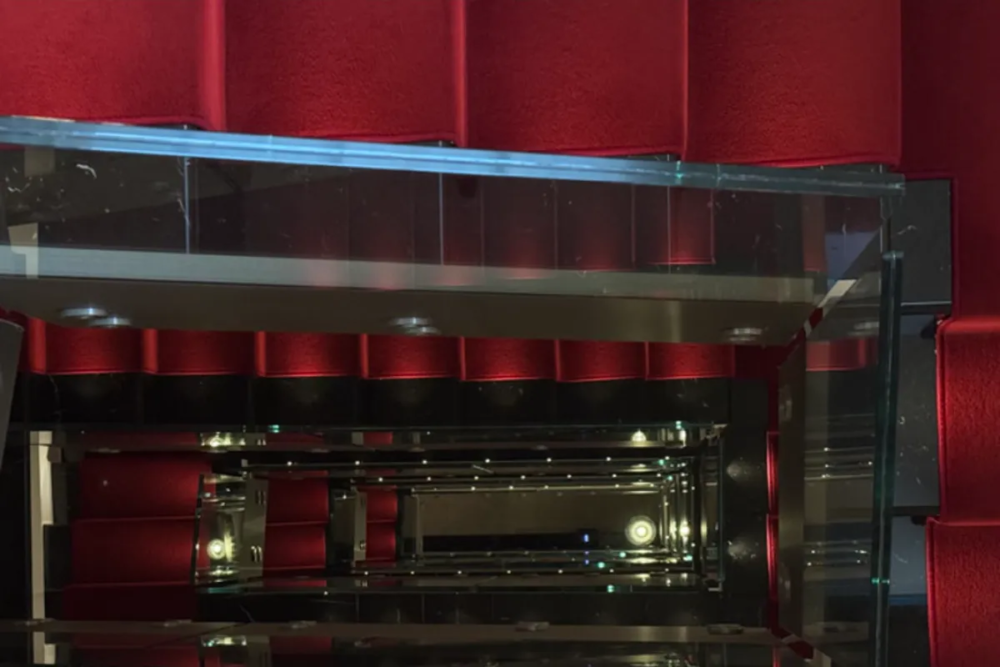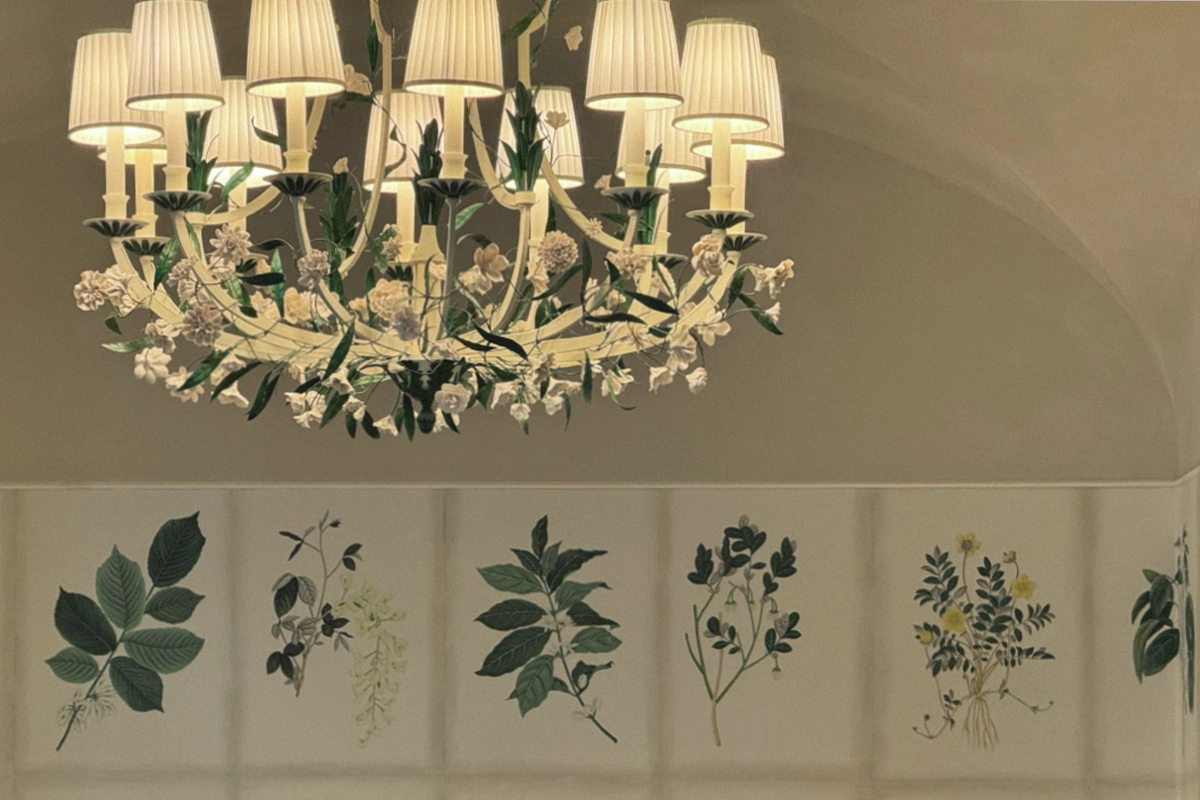
Onde: A Mediterranean Enclave in Florence
Rinascimento and the Sea: Onde, the new restaurant at the Four Seasons Hotel Firenze, embodies the essence of the Mediterranean within a historic Florentine palace
The atmosphere at Onde, the restaurant inside Palazzo del Nero – Four Seasons Hotel Firenze
Entering the dining room feels like stepping into a suspended time: the hallway walls depict ships sailing calm seas, while the mythological ceiling decorations evoke Botticelli’s paintings. Onde – the new restaurant at the Four Seasons Hotel Firenze – embodies the essence of the Mediterranean within a historic Florentine palace. It’s like a Versilian enclave nestled in Florence’s greenery, with traces of the Renaissance that still linger in the background.
The indoor rooms overlooking the Renaissance Giardino della Gherardesca are like jardins d’hiver: bright glass walls, plants, and flowers make the space feel like an extension of the outdoor landscape. The white marble tables recall the purity of sea salt. Pink peonies appear freshly picked, reminiscent of an early spring day in the late 1500s – the era in which Palazzo Del Nero, where Onde is located, was built.
Looking upward: seahorses and fantastic creatures support a Venus, cherubs and swans populate playful fountains, evoking a fairytale by Charles Perrault or Giambattista Basile. Pastel-colored paintings on the walls add serenity to the ambiance, maintaining that balance between classicism and modernity that defines the entire project.
The Culinary Concept: Raw Dishes, Fried Delights, and a Retro Touch
Onde’s menu is designed primarily for sharing, aiming to recreate the atmosphere of a seaside dinner – while being in the heart of the city. The dining scene comes alive with dishes showcasing various transparencies, textures, and finishes: rough glass plates, artisanal ceramics and irregularly shaped dishes form a deep blue wave across the table’s white marble, highlighting the freshness and colors of the seafood.
The menu also includes traditional dishes such as fried seafood, oysters with champagne, and pasta (that pays homage to Versilian traditions, like spaghetti alle arselle – a local clam from the Tuscan coast). References to the 1980s add a touch of playful nostalgia.
The dessert chapter reflects Onde’s playful philosophy. Alongside citrusy Sgroppino and Lemon Tiramisu (perhaps a tribute to Amalfi and Sorrento?), there’s a vanilla ice cream with cherries served in a retro-style cup. An unexpected Banana Split makes a delightful appearance, adding a vintage flavor that lightens the evening’s tone.
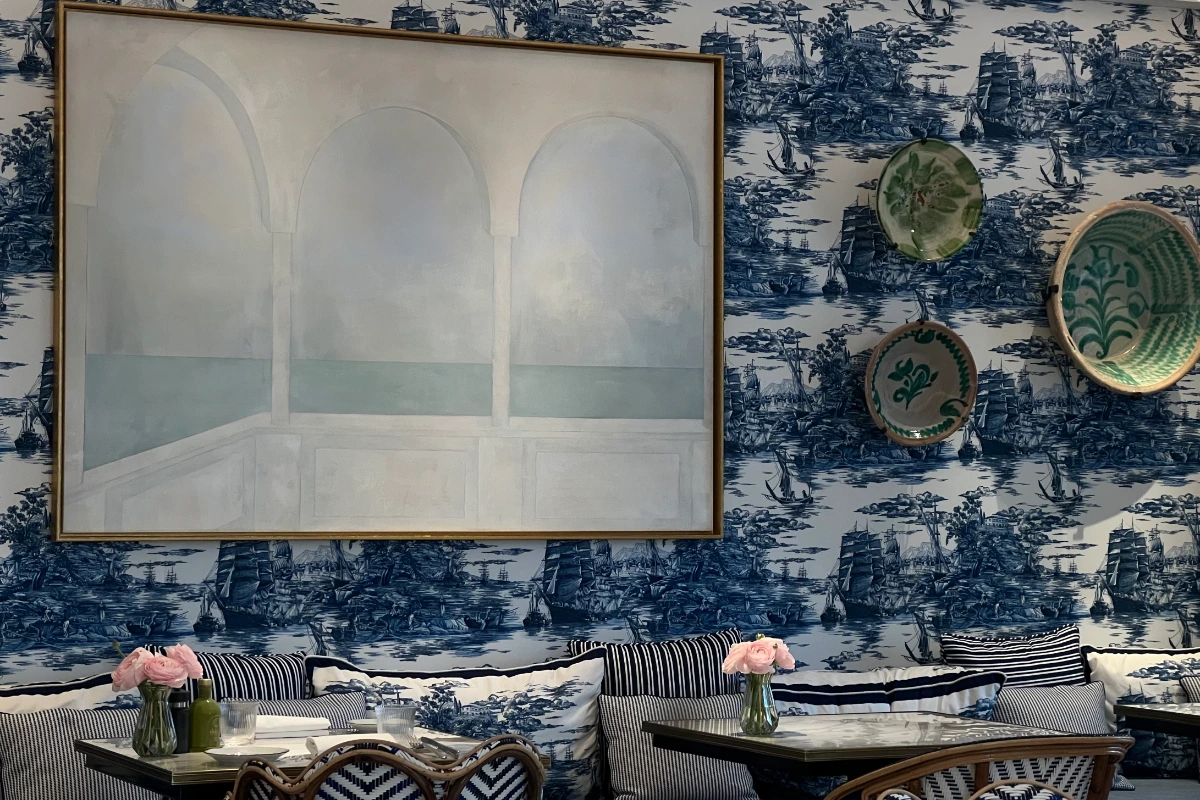
The Origins and Vision of Onde – Executive Chef Paolo Lavezzini
Behind Onde’s concept stands Executive Chef Paolo Lavezzini, who has always maintained a deep connection to the Tyrrhenian coast. With his family based in Versilia, he was inspired to bring the flavors of the sea to Florence. Collaborating with him are Sous Chef Giacomo Cavicchi, Restaurant Manager Roberto Pennacchiotti, and F&B Director Alessio Anedda, united by the goal of creating a “contemporary osteria” that combines Tuscan ingredients, international influences, and a spirit of conviviality.
Another facet of the experience is Bar Berni, the new all-day dining and vermouth bar at the Four Seasons Hotel Firenze. The name honors Bernardo Del Nero, founder of the ancient family that owned the palace for over two centuries. The bar offers cocktails entirely based on vermouth, inspired by the seven islands of the Tuscan Archipelago and their wild herbs.
Palazzo Del Nero: History and Transformation
In fact, Onde and Bar Berni are housed within Palazzo Del Nero, a 16th-century building that forms part of the Four Seasons Hotel Firenze complex, located just steps from Palazzo della Gherardesca. Originally a noble residence for the Del Nero family, the palace later passed to the Ruspoli family before becoming a convent in the 20th century.
When integrated into the Four Seasons project, Palazzo Del Nero underwent a restoration to preserve its historical elements while introducing modern comforts. Interior designer Pierre-Yves Rochon balanced the palace’s heritage with contemporary solutions. The color palette – golds, greens, and reds – evokes Renaissance grandeur, while wallpaper featuring views of the Arno River and Tuscan countryside reinforces the connection to its surroundings.
The palace offers 36 rooms and suites, serviced by a dedicated reception, concierge, and event space – the Sala Conventino, adapted from a deconsecrated early 20th-century church.
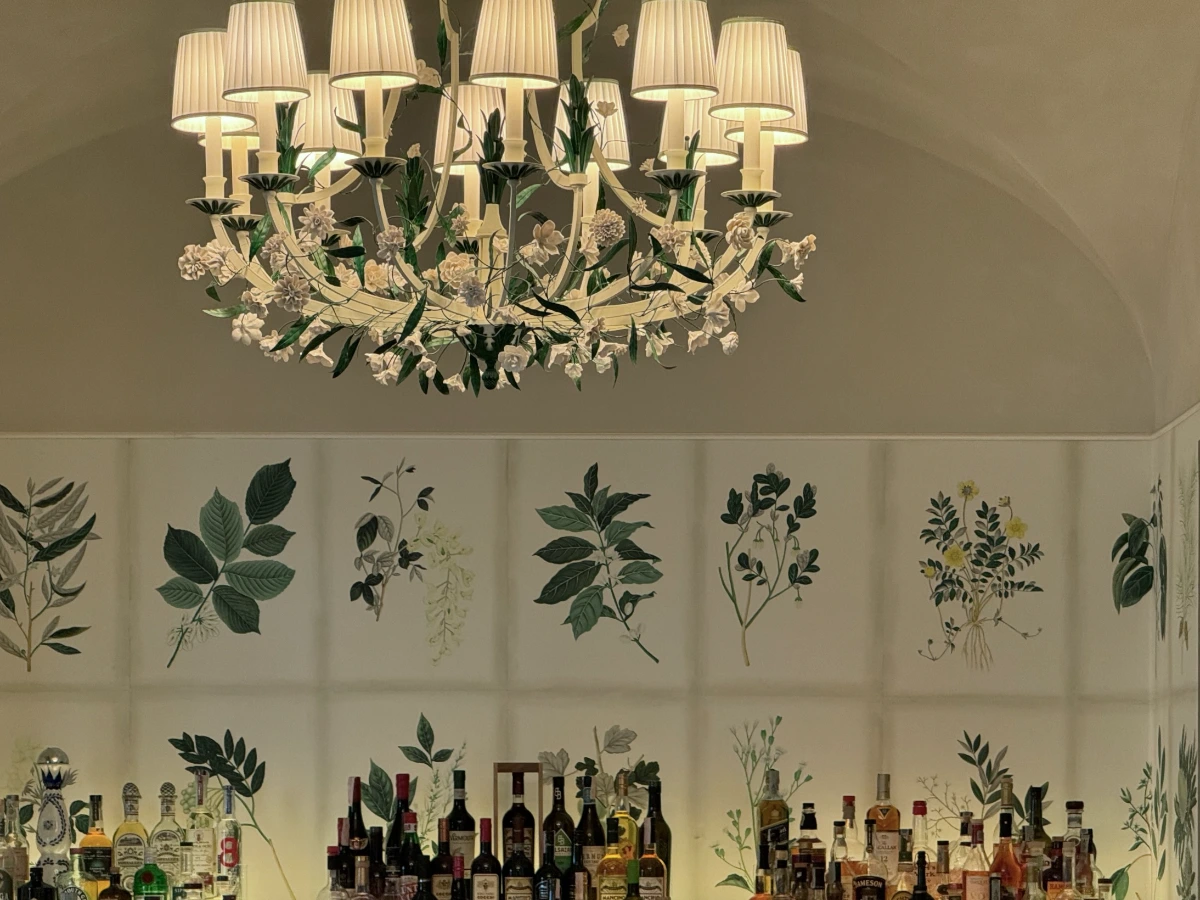
Renaissance Inspiration and Contemporary Challenge
The restoration of Palazzo Del Nero is part of a broader project initiated years ago with Palazzo della Gherardesca, the other historic building that forms Four Seasons Hotel Firenze. Here, too, Rochon’s task was to preserve the original frescoes, wooden ceilings, and decorative details while incorporating modern comforts and technology to meet today’s needs.
The Birth of the Palazzo and the 15th-Century Historical Context
The original core of the palace dates back to the second half of the 15th century. It is believed to have been commissioned by Bartolomeo Scala, Chancellor of the Florentine Republic, who sought a residence worthy of his status at the court of Lorenzo il Magnifico. At that time, Florence was under the rule of the Medici family, who not only influenced the city’s political fate but also shaped its architectural and urban planning choices.
From its inception, the palace displayed the typical characteristics of Florentine noble residences: a sober façade adhering to principles of proportion and symmetry, a grand internal courtyard around which the living spaces were arranged, and a garden dedicated to leisure and social life. The desire to integrate an urban residence with green spaces was a Renaissance concept known as a villa in the city.
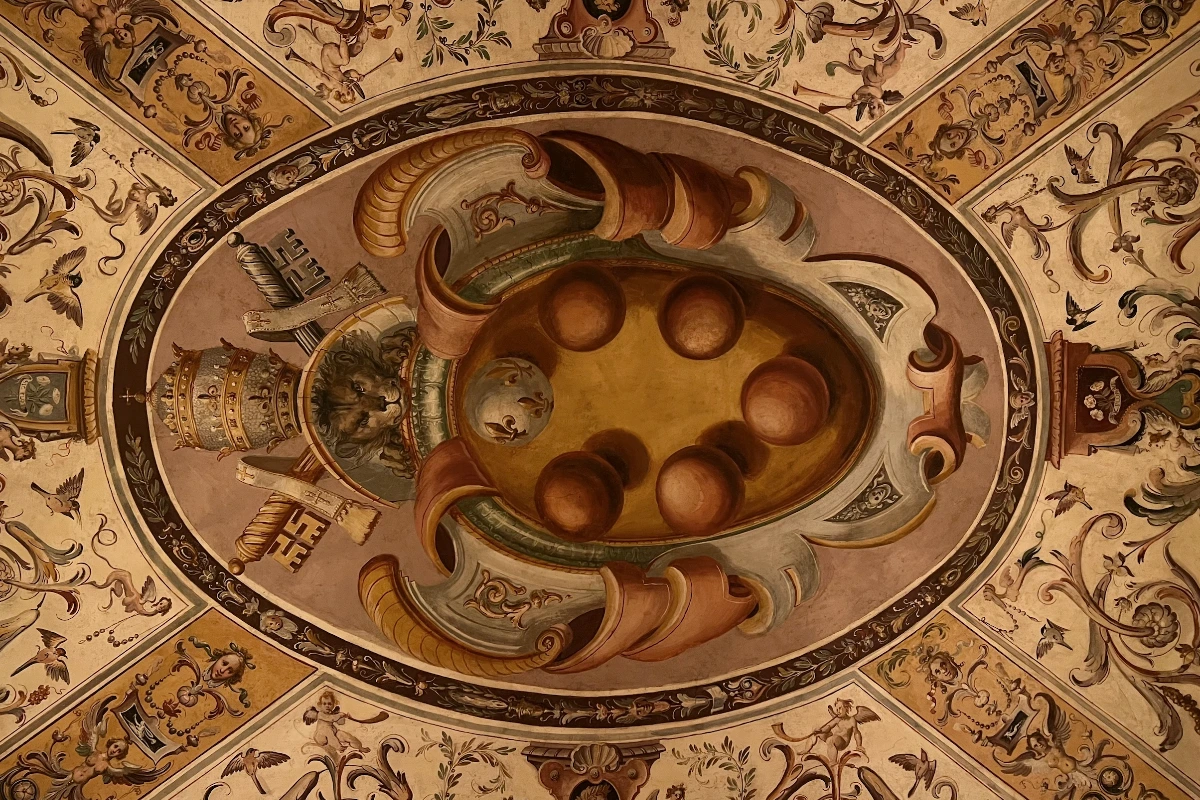
With Costanza and Ugo’s union, the palace acquired the name it still bears today: Palazzo della Gherardesca
Following Bartolomeo Scala’s death, the palace gradually passed to other Florentine families, including the Medici. The property was linked to Alessandro de’ Medici, a cardinal and future Pope Leo XI, who expanded some of the interior spaces and enriched its artistic elements. Even today, traces of frescoes and Medici family symbols, such as the distinctive “balls” on their coat of arms, can be seen in certain areas of the palace.
Later, the property was inherited by Costanza de’ Medici, Alessandro’s sister, who married Count Ugo della Gherardesca: the palace acquired the name it still bears today, Palazzo della Gherardesca.
During this period, the palace not only expanded internally but also became a key venue for Florentine aristocratic gatherings. The halls came alive with banquets, receptions, and diplomatic meetings. By then, Florence was firmly under the rule of the Grand Duchy of Tuscany (first under the Medici, then the Lorraine dynasty) and remained a thriving center of cultural and political activity. Owning such a vast palace with an extensive garden within the city walls was a clear mark of prestige.
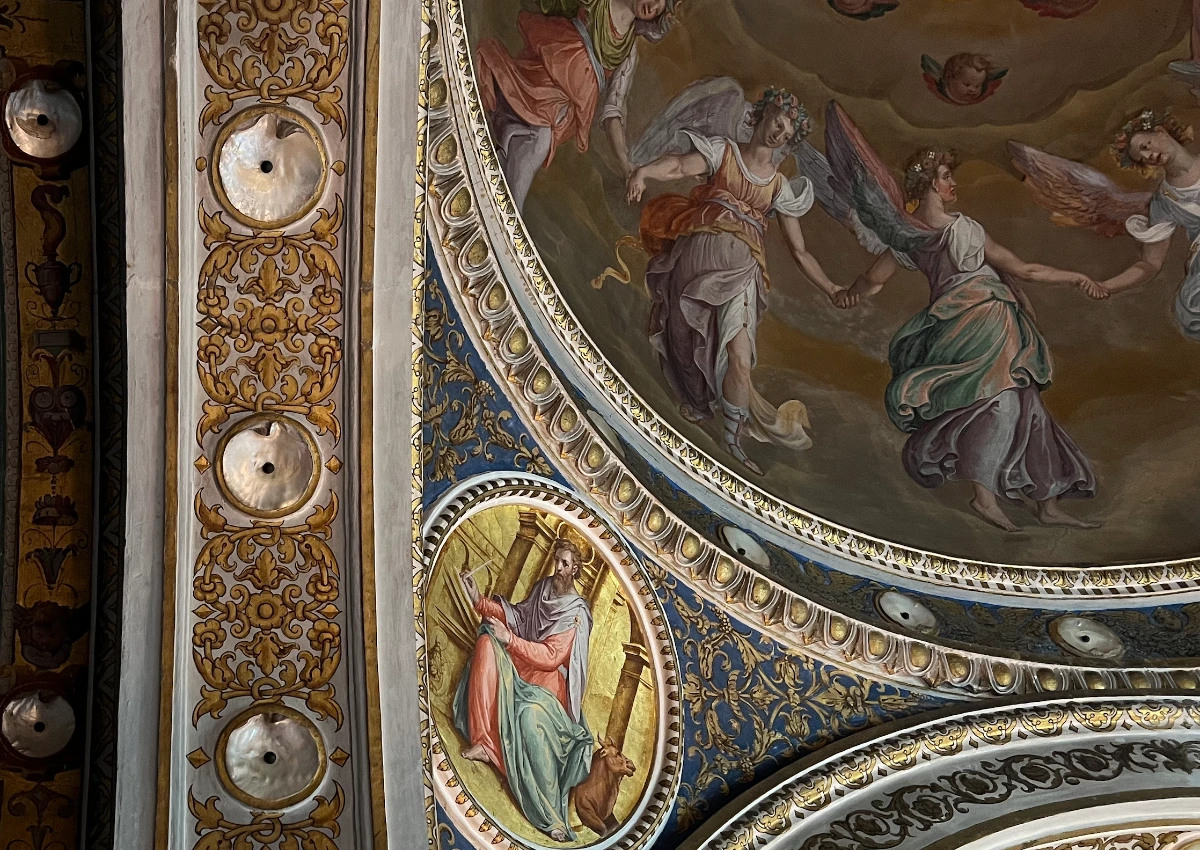
Architectural Evolutions Between the 16th and 17th Centuries
Between the late 16th and early 17th centuries, the palace underwent several architectural modifications. While its Renaissance character remained intact, early signs of Baroque influence began to emerge. This shift was evident in the interior decorations, with the addition of stucco work, frescoes, and carved coffered ceilings. Some rooms were transformed into galleries for art collections, a common practice among noble families of the time.
It is likely that during this period, the private chapel within the property was conceived, featuring delicate frescoes and a marble altar. For an aristocratic residence of the era, having an internal place of worship was not only a convenience but also a symbol of social distinction and a tribute to the private devotion characteristic of noble families.
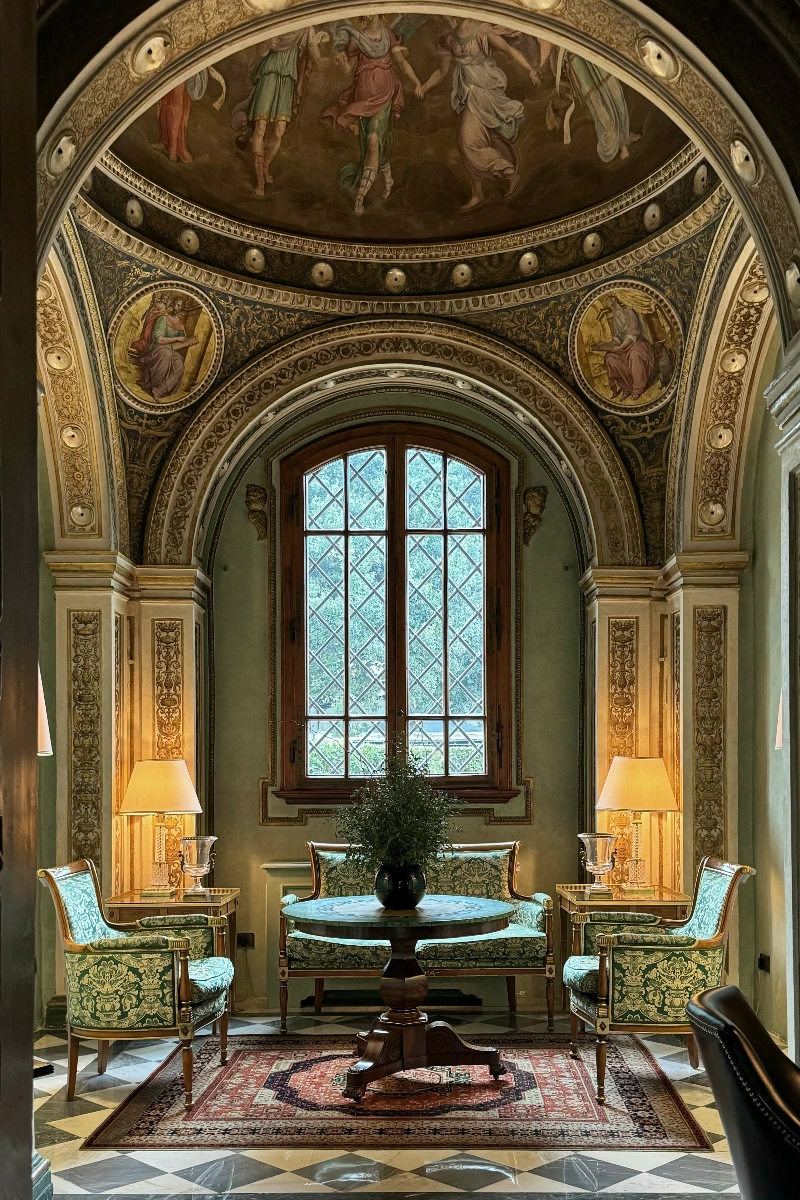
One of the nine chapels inside the Four Seasons Hotel Florence
The chapel overlooking the courtyard is notable for its fifteenth-century architecture and the sixteenth-century decorative program commissioned by Alessandro de’ Medici. In 1475, Scala received authorization from the Archbishop of Florence to build it, although it was a private residence rather than a princely palace. This reflected his adherence to humanistic principles, especially those in Alberti’s treatises, which recommended adding secluded elements such as a chapel and a garden.
Dedicated to the Virgin, the chapel is divided into two sections, both fully frescoed and inscribed. The first section includes panels depicting original sin and the forefathers, framed by grotesques and mother-of-pearl wings. The second section features roundels of the four Evangelists set amid angels dancing on clouds, with cherubs and the dove of the Holy Spirit at the center. These areas show different stylistic traits, suggesting the work of multiple artists.
It is likely that Giovanni Balducci and Agostino Ciampelli collaborated here. Both worked in Rome on commissions from cardinals. Ciampelli’s style is visible in the two putti holding a scroll above the entrance and possibly in the angels in the small cupola, which resemble his figures in the Basilica of Santa Maria in Trastevere.
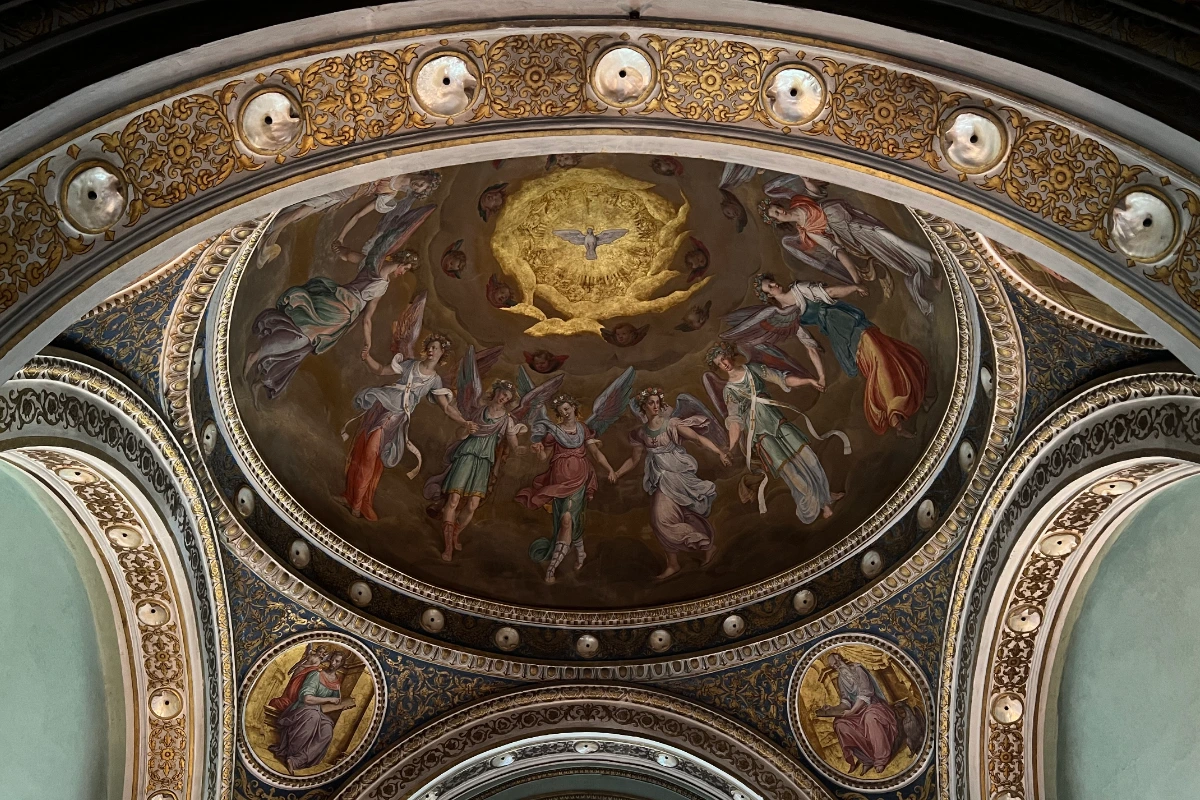
The Monastic Period and 19th-Century Transformations
The 19th century brought political changes to Italy. When Florence briefly became the capital of the Kingdom of Italy (1865–1871), the ownership and function of many aristocratic properties shifted. During this time, Palazzo della Gherardesca experienced a religious interlude, being transformed into a monastery.
Later, it also experienced periods of decline and structural changes. Like many other aristocratic residences, the high maintenance costs and the evolving political landscape of unified Italy—which reduced the privileges of the old nobility—made the preservation of historic properties increasingly difficult. As ownership changed hands and the building was adapted for different uses, the palace continued to reflect Florence’s evolving urban landscape.
During the so-called “Risanamento” (Urban Renewal) led by architect Giuseppe Poggi, Florence underwent transformations, including new roads and the construction of ring boulevards. Although the palace remained somewhat secluded from the city’s political and commercial hub, its gardens and surrounding areas were reshaped.
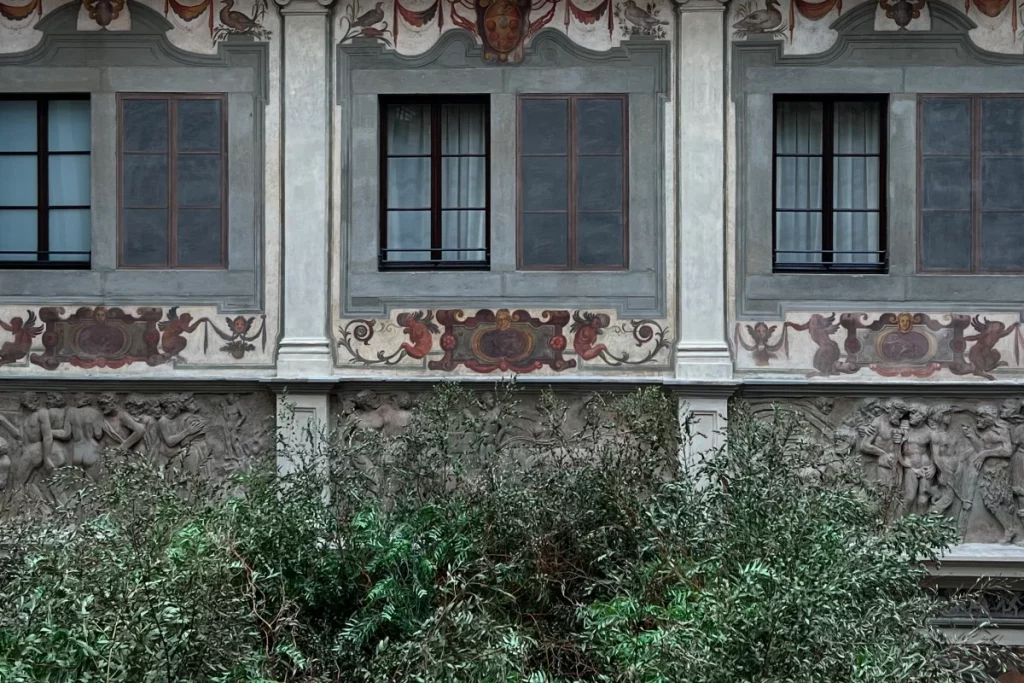
Over the decades, Palazzo della Gherardesca was bought or inherited by various owners
One of the most eccentric figures that owned the palace was Isma’il Pasha, the former Khedive of Egypt, who acquired the palace around 1870–1880. He had grandiose plans, including the creation of an Oriental-style setting within the palace, but abandoned them when Florentine authorities denied his request to establish a full-fledged harem on city grounds.
During the 20th century, the palace passed to several private companies, including a railway corporation and a metallurgical firm, which repurposed its spaces as offices and warehouses. In this period, some interior modifications were made to suit business needs. While these activities were not directly aligned with the preservation of a historic building, they helped prevent the palace from falling into complete neglect.
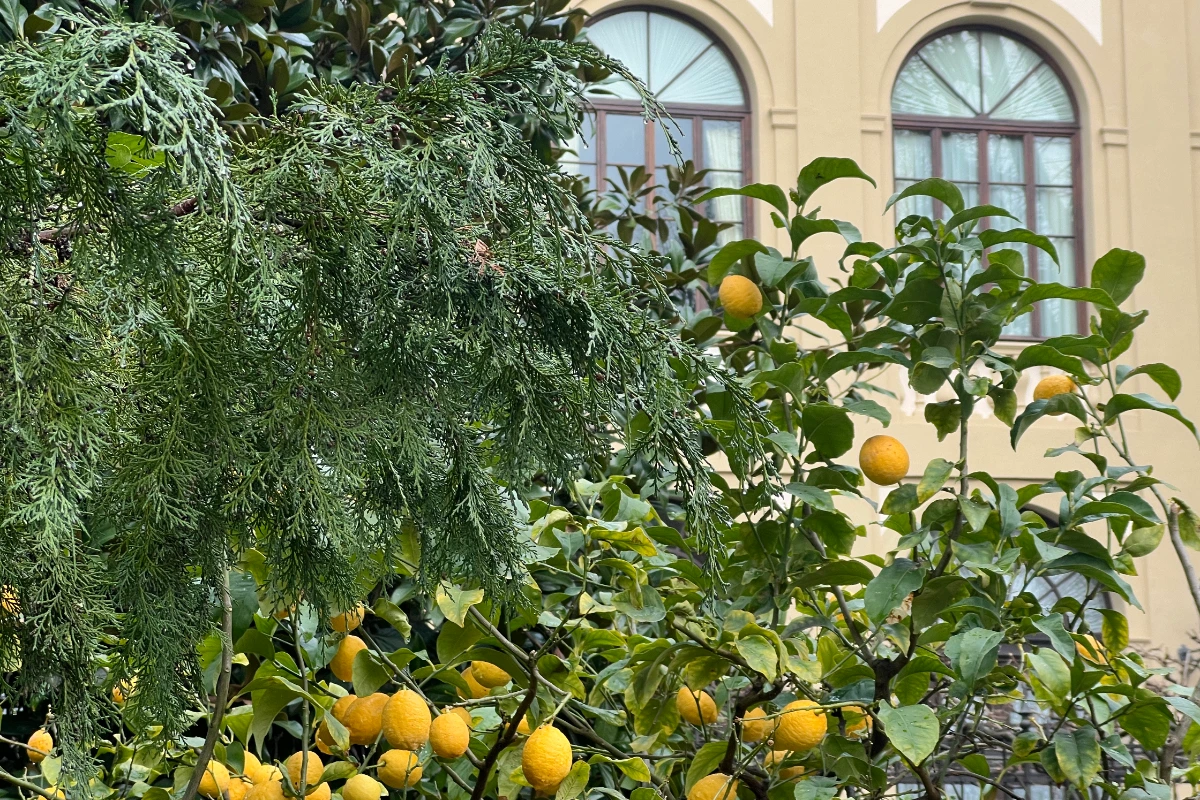
Acquisition by Four Seasons and the Restoration
At the beginning of the 2000s, a new chapter began for Palazzo della Gherardesca. Four Seasons Hotels and Resorts identified the structure’s potential: a historic building of artistic and architectural value, surrounded by a vast and still-enchanting garden, in the heart of Florence. The idea of creating a hotel that blended the charm of the past with modern amenities was well received by local authorities, eager to revitalize the city’s heritage.
The restoration project began in 2001 and lasted about seven years. It was one of the most complex renovations ever undertaken in Florence’s historic center, also due to strict regulations imposed by the Soprintendenza Archeologia, Belle Arti e Paesaggio.
A team of restorers worked on recovering mural decorations in rooms that had been partially altered by improper use over time. Gradually, false ceilings and wall panels were removed, revealing allegorical scenes, floral motifs, heraldic coats of arms, and intricately carved coffered ceilings. Some spaces revealed unexpected discoveries: forgotten fresco fragments, walled-up original rooms, and traces of secret passageways. Meanwhile, architects and engineers devised creative solutions to integrate modern infrastructure—such as air ducts and wiring—into the historic spaces.
Giardino della Gherardesca
Beyond its architecture, one of the defining features of Four Seasons Hotel Firenze is the Giardino della Gherardesca, spanning nearly five hectares, making it one of the largest private gardens in central Florence. Its origins date back to Renaissance landscaping traditions when Florentine nobles meticulously curated green spaces with geometric precision. Over the centuries, the garden was enriched with exotic plants, statues, fountains, and shaded pathways. Some of these enhancements date to the 19th century when the Romantic taste for English-style gardens became popular, favoring softer lines and wooded areas that mimicked natural landscapes.
During the restoration, special attention was given to the preservation of historic vegetation. Monumental trees, such as centuries-old lime and cedar trees, underwent agronomic treatments to ensure their survival. The pathways were carefully restored to align with the original design, while discreet lighting solutions were incorporated to allow for evening strolls without disrupting the garden’s visual harmony.
Today, Giardino della Gherardesca is an oasis where visitors can wander among ancient statues and scenic viewpoints that frame the Duomo’s dome in the background. A rectangular swimming pool is symmetrically aligned with a small temple, creating a Romantic setting.
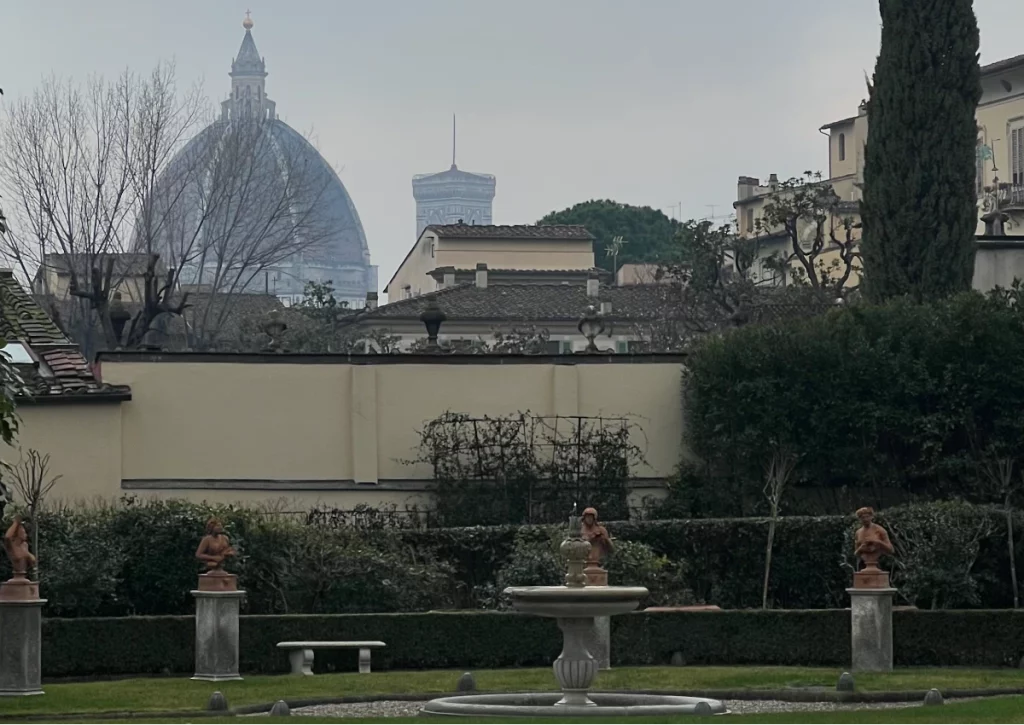
Rooms and Suites: A Journey Through History
Four Seasons Hotel Firenze finally opened in June 2008. Choosing a room at Four Seasons Hotel Firenze often means uncovering details that whisper stories of the past—an overhead fresco, a family crest in a corner, or a pietra serena stone balustrade overlooking the courtyards.
Each floor of the palace holds historical features: The noble floor (piano nobile), the first floor by Florentine standards, houses the most spectacular suites, with high ceilings and large windows overlooking the park.
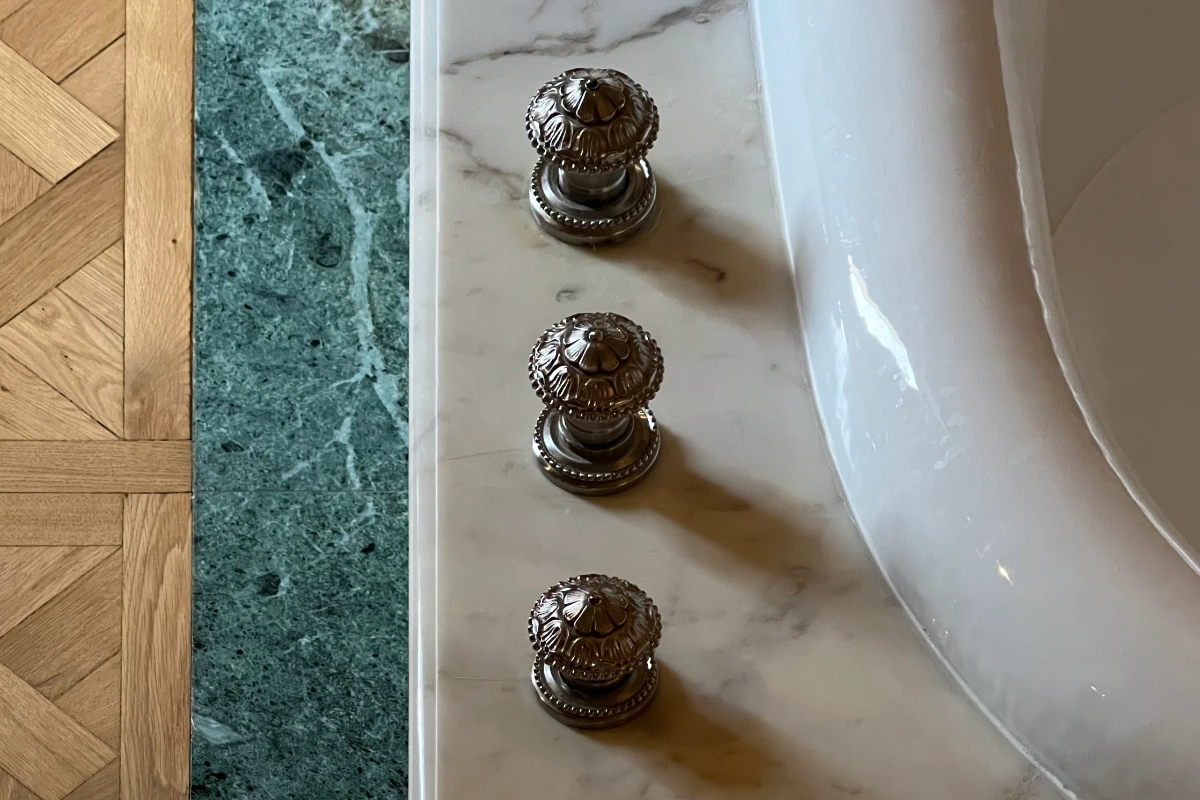
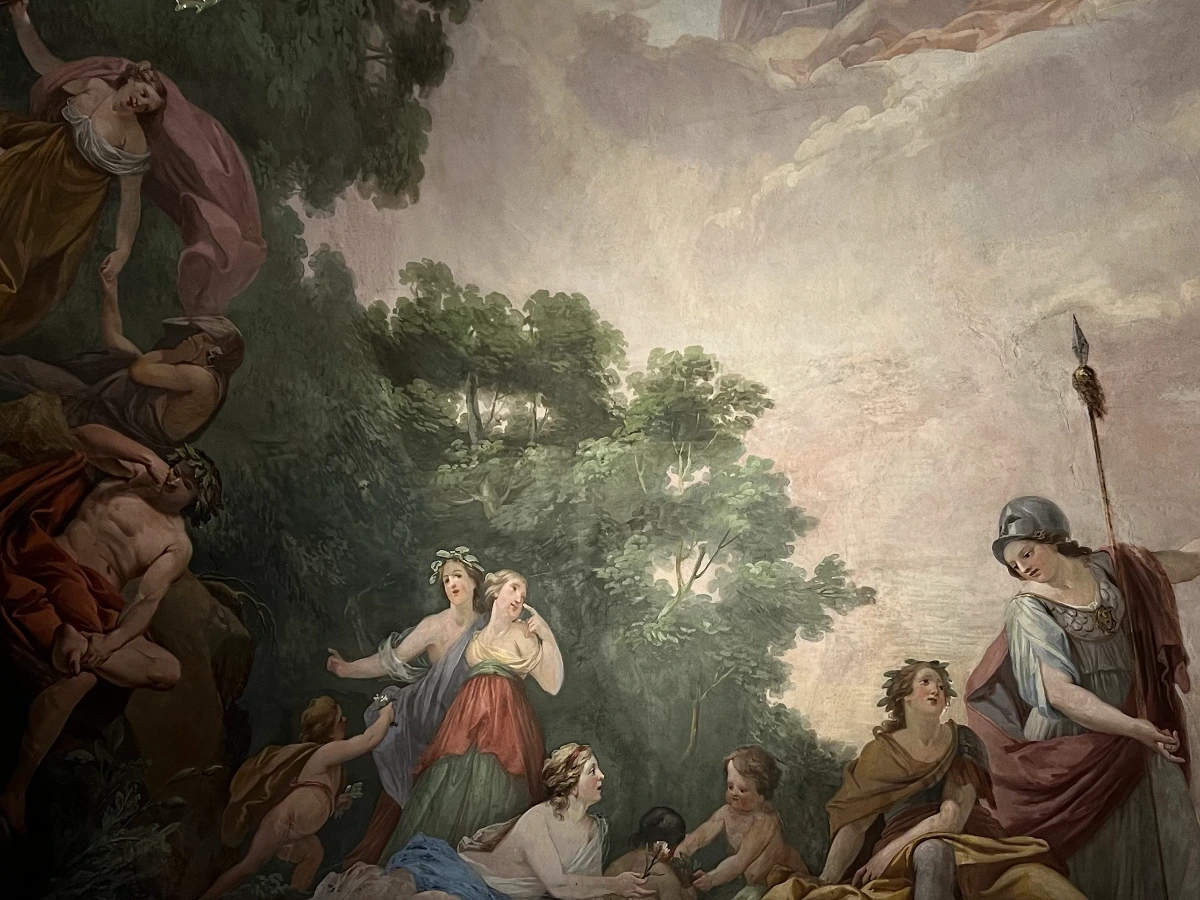
Atrium Bar, Il Palagio, and the Spa
Beyond Onde, the hotel’s culinary offerings include the Atrium Bar and the Michelin-starred Il Palagio. Located on the ground floor, Il Palagio overlooks the garden and features an elegant yet understated ambiance, enhanced by original artistic elements.
Inside what was once the palace’s stables is the Four Seasons Hotel Firenze Spa, a space dedicated to physical and mental well-being. The area has been reconfigured into rooms for massages and beauty treatments, offering guests a serene retreat within a setting rich in history.


